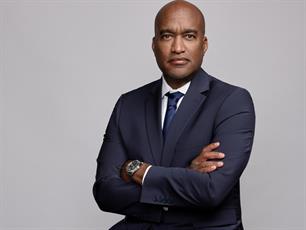Paul Holmes 28 Aug 2002 // 11:00PM GMT
“It was not inaccurate, but it was a lousy piece of reporting,” says Ken Sternad. “There were no real factual errors, but it left an impression of UPS and its relationship with its employees that was totally false.”
To Sternad, director of corporate communications at UPS, and to others in the company’s management team, the article that appeared in the Atlanta Journal-Constitution on August 2 was a stinging reminder that the company still has a long way to go to rebuild its reputation. Even though the company has worked hard to put the Teamsters’ strike of a year ago behind it, the effects of that dispute are still felt today.
“A story like this hurts a lot,” says Sternad. “The reporter in question had a preordained thesis and was looking for material to support that thesis. She selected sources who would support that thesis. She talked to the most bitter, anti-company employees she could find. I don’t believe this is the way the press usually works, but for people in the company who don’t deal with the media every day, it just makes them more suspicious. It makes them question whether it’s worth making the effort to communicate at all.”
The company’s renewed commitment to communication has led to an expanded staff in Sternad’s department—up from nine people at the time of the strike to 16 today—and an expanded role. “In the past, public relations was essentially a marketing support function,” says Sternad. “Today there’s much more focus on corporate reputation.”
UPS also changed PR firms, replacing long-time agency of record Edelman Public Relations with Fleishman-Hillard, although Edelman continues to handle some UPS business. The Journal-Constitution artcile quoted Sternad saying that he wanted F-H to play a “very strategic role” and implied that Edelman had not. Sternad says Edelman played the role the company allowed it to play, and is clear that the agency was not responsible for most of the poor communications decisions made during the strike.
“We were not as well prepared as we should have been and we made some decisions that made it very difficult for us to communicate during the strike,” he says. “We decided that we were not going to attack the Teamsters’ leadership on a personal level, although it would have been very easy to do so.” Teamsters’ leader Ron Carey was dismissed from his position just days after the strike ended because of campaign financing irregularities.
Other problems, logistical and strategic, hindered the company’s communications, and public sympathy during the strike was overwhelmingly with the workers, who were able to frame the debate as one about the company’s use of part-time labor to avoid creating “real jobs.” Labor relations experts and crisis communications consultants have, as a result, been almost universally critical of the company’s handling of the strike, a tone that was reflected in the Journal-Constitution article.
“We were overwhelmed,” Sternad says. “And we were under-resourced.” He says the Fleishman-Hillard team, which includes Bill Anderson and Alan Akerson in St. Louis and Jan van Meter in New York, has helped the company’s management understand the importance of corporate reputation. “Interest in communication now goes all the way to the top of the organization. Historically we didn’t talk about all the things we did in the community. Now we’re beginning to realize that it’s important to get credit for that kind of stuff.”
The Journal-Constitution article suggests that UPS still has a long way to go. For example, the story says UPS chairman Jim Kelly has repeatedly referred to the “irresponsible” actions of the strikers in company communication, without acknowledging any intransigence on the company’s part. That doesn’t sound like a company trying to put the dispute behind it.
“There’s no question that the strike was irresponsible,” says Sternad. “We have not been shy about saying that. The agreement we eventually signed with the Teamsters’ was virtually identical to the offer that was on the table before the strike. On the other hand, we have tried not to dwell on the past in dealing with employees. I would be surprised if Jim Kelly said that.”
In any case, Sternad says, most of the quotes from Kelly and other company representatives used in the article are several months old. “The story took quotes from six months ago, just after the strike ended, and gave the impression that those were things we were saying today. The things we said in January are not the same things we are saying today.”
As for the story’s implied criticism of UPS’s communications, based on the absence of any major new employee communications initiative, Sternad says that ignores the good work the company has done for years.
“One of the reasons we don’t have a lot of new communications initiatives is that we have always had a strong commitment to communicating with our employees,” Sternad says. In fact, UPS has integrated employee communication into the workday in a way few other companies have. “We hold communications meeting with virtually every employee virtually every day. There’s about three minutes—actually, this is UPS, so it’s exactly three minutes—set aside for communications meetings at the start of every day.”
Some of the content for these meetings comes from the corporate headquarters, and might include information about what the competition is up to, or legislation that might affect the company, or new products and services. Some content comes from the district manager, focused on regional issues. Some might come from the individual group’s manager and deal with quality at the group level.
The company has also introduced a program it calls Delivering Our Future, which encourages drivers to become part of the company’s sales effort, wooing customers as they deliver packages.
The focus is on two-way communication, Sternad says. “We have what may be the biggest employee survey in corporate America,” he says. “We survey all our employees, and we get an 80 percent response rate, which means that 240,000 people participate in the survey and get to tell us what they think of the job we are doing as managers.”
Sternad believes the company should get credit for going ahead with the survey just two weeks after employees returned to work after the strike last year. “Not surprisingly, we scored about five percent lower across the board than in previous years, but the survey helped us because it gave us information about the areas we needed to address.”
Most of all, he believes the company should get credit for a strong recovery. UPS says it has won back almost every customer it lost as a result of the strike, and the company has also turned in impressive financial results in the past two quarters, with profits up 50 percent and 35 percent on the same periods last year. It would be nice, Sternad says, to earn some recognition for that achievement.
The company apparently won’t get that recognition from its hometown newspaper. A letter responding to the article was edited and cut to the point that the company decided to withdraw it. “This was an article that started on the front page of the business section and took up two full pages inside the paper. We wrote a 250-word response and it was edited down to about 150 words for publication, and took out the two most important points we wanted to make,” Sternad says.
“It just confirmed our belief that they had no interest in being fair or objective."
To Sternad, director of corporate communications at UPS, and to others in the company’s management team, the article that appeared in the Atlanta Journal-Constitution on August 2 was a stinging reminder that the company still has a long way to go to rebuild its reputation. Even though the company has worked hard to put the Teamsters’ strike of a year ago behind it, the effects of that dispute are still felt today.
“A story like this hurts a lot,” says Sternad. “The reporter in question had a preordained thesis and was looking for material to support that thesis. She selected sources who would support that thesis. She talked to the most bitter, anti-company employees she could find. I don’t believe this is the way the press usually works, but for people in the company who don’t deal with the media every day, it just makes them more suspicious. It makes them question whether it’s worth making the effort to communicate at all.”
The company’s renewed commitment to communication has led to an expanded staff in Sternad’s department—up from nine people at the time of the strike to 16 today—and an expanded role. “In the past, public relations was essentially a marketing support function,” says Sternad. “Today there’s much more focus on corporate reputation.”
UPS also changed PR firms, replacing long-time agency of record Edelman Public Relations with Fleishman-Hillard, although Edelman continues to handle some UPS business. The Journal-Constitution artcile quoted Sternad saying that he wanted F-H to play a “very strategic role” and implied that Edelman had not. Sternad says Edelman played the role the company allowed it to play, and is clear that the agency was not responsible for most of the poor communications decisions made during the strike.
“We were not as well prepared as we should have been and we made some decisions that made it very difficult for us to communicate during the strike,” he says. “We decided that we were not going to attack the Teamsters’ leadership on a personal level, although it would have been very easy to do so.” Teamsters’ leader Ron Carey was dismissed from his position just days after the strike ended because of campaign financing irregularities.
Other problems, logistical and strategic, hindered the company’s communications, and public sympathy during the strike was overwhelmingly with the workers, who were able to frame the debate as one about the company’s use of part-time labor to avoid creating “real jobs.” Labor relations experts and crisis communications consultants have, as a result, been almost universally critical of the company’s handling of the strike, a tone that was reflected in the Journal-Constitution article.
“We were overwhelmed,” Sternad says. “And we were under-resourced.” He says the Fleishman-Hillard team, which includes Bill Anderson and Alan Akerson in St. Louis and Jan van Meter in New York, has helped the company’s management understand the importance of corporate reputation. “Interest in communication now goes all the way to the top of the organization. Historically we didn’t talk about all the things we did in the community. Now we’re beginning to realize that it’s important to get credit for that kind of stuff.”
The Journal-Constitution article suggests that UPS still has a long way to go. For example, the story says UPS chairman Jim Kelly has repeatedly referred to the “irresponsible” actions of the strikers in company communication, without acknowledging any intransigence on the company’s part. That doesn’t sound like a company trying to put the dispute behind it.
“There’s no question that the strike was irresponsible,” says Sternad. “We have not been shy about saying that. The agreement we eventually signed with the Teamsters’ was virtually identical to the offer that was on the table before the strike. On the other hand, we have tried not to dwell on the past in dealing with employees. I would be surprised if Jim Kelly said that.”
In any case, Sternad says, most of the quotes from Kelly and other company representatives used in the article are several months old. “The story took quotes from six months ago, just after the strike ended, and gave the impression that those were things we were saying today. The things we said in January are not the same things we are saying today.”
As for the story’s implied criticism of UPS’s communications, based on the absence of any major new employee communications initiative, Sternad says that ignores the good work the company has done for years.
“One of the reasons we don’t have a lot of new communications initiatives is that we have always had a strong commitment to communicating with our employees,” Sternad says. In fact, UPS has integrated employee communication into the workday in a way few other companies have. “We hold communications meeting with virtually every employee virtually every day. There’s about three minutes—actually, this is UPS, so it’s exactly three minutes—set aside for communications meetings at the start of every day.”
Some of the content for these meetings comes from the corporate headquarters, and might include information about what the competition is up to, or legislation that might affect the company, or new products and services. Some content comes from the district manager, focused on regional issues. Some might come from the individual group’s manager and deal with quality at the group level.
The company has also introduced a program it calls Delivering Our Future, which encourages drivers to become part of the company’s sales effort, wooing customers as they deliver packages.
The focus is on two-way communication, Sternad says. “We have what may be the biggest employee survey in corporate America,” he says. “We survey all our employees, and we get an 80 percent response rate, which means that 240,000 people participate in the survey and get to tell us what they think of the job we are doing as managers.”
Sternad believes the company should get credit for going ahead with the survey just two weeks after employees returned to work after the strike last year. “Not surprisingly, we scored about five percent lower across the board than in previous years, but the survey helped us because it gave us information about the areas we needed to address.”
Most of all, he believes the company should get credit for a strong recovery. UPS says it has won back almost every customer it lost as a result of the strike, and the company has also turned in impressive financial results in the past two quarters, with profits up 50 percent and 35 percent on the same periods last year. It would be nice, Sternad says, to earn some recognition for that achievement.
The company apparently won’t get that recognition from its hometown newspaper. A letter responding to the article was edited and cut to the point that the company decided to withdraw it. “This was an article that started on the front page of the business section and took up two full pages inside the paper. We wrote a 250-word response and it was edited down to about 150 words for publication, and took out the two most important points we wanted to make,” Sternad says.
“It just confirmed our belief that they had no interest in being fair or objective."


































.jpg)






.tmb-135x100.png)










